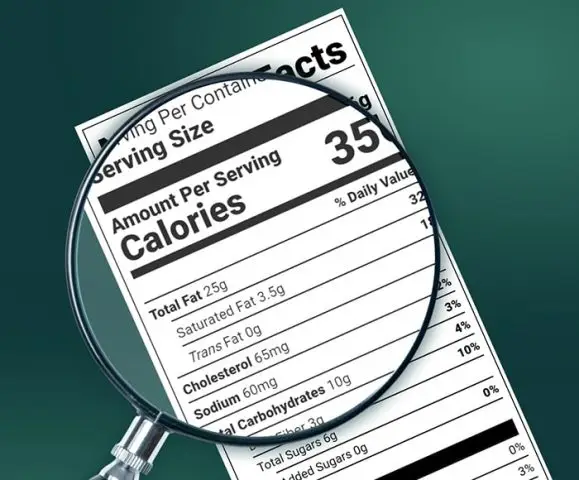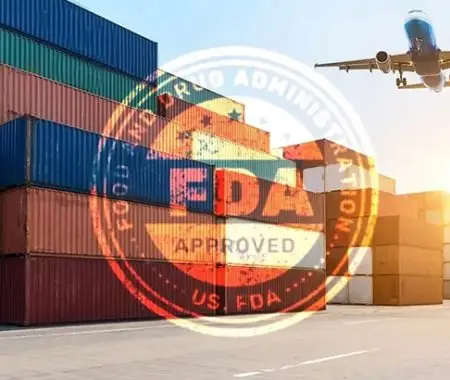It’s time to pay attention to the general food labeling requirements, whether you’re a startup or an established importer – the Food and Drug Administration (FDA) unveiled significant updates to its compliance program named “General Food Labeling Requirements and Labeling-Related Sample Analysis – Domestic and Import.” The good news is this update doesn’t involve any major new regulations but rather indicates a move to close the gap between inspections and food labeling standards.
Basically, this updated version serves as an instruction manual for inspectors, indicating specific key points to focus on to make sure there are close to zero misleading food labels.
This article will take you through exactly what border protection officials are looking for and how this affects food product labels specifically.
Looking for more information on how to ensure your food labels are fully compliant with the new FDA guidelines? Try our Hire an Expert Service to have your food labels crafted by nutrition experts, guaranteeing compliant labels across the USA, Canada, UK, Mexico, EU, Australia and the Middle East.
Compliance Made Simple.
Find Your Perfect Plan.
A Closer Look: The FDA’s Revised Compliance and Regulatory Program
To understand these new rules, we first need to know how the FDA operates. The FDA has a specific set of rules to make sure that all food products are safe and their labels are accurate, better known as the FDA’s Compliance Program.
What is a Compliance Program?

An FDA Compliance Program is a set of instructions that the FDA personnel follow to evaluate industry compliance with their laws and regulations.
This updated FDA Compliance Program, published in June 2025, serves as the replacement of the 2010 Compliance Program (CP).
It is used for both domestic and import inspections, providing clear guidance for a more vigorous focus on beverages, dietary supplements, pharmaceutical drugs, and food label compliance. According to the FDA, in their official announcement, it’s stated that:
“The purpose of the CP is to help ensure that food facilities comply with FDA regulations, and to protect public health by identifying and addressing food safety issues.”
— U.S. Food and Drug Administration, HFP Constituent Updates, Read the full update here.
When it comes to the FDA nutrition label approval and review process, it’s an intricate and well-thought-out system that has a different process for each product type. It’s important to understand the process, and its unique challenges.
By regularly updating these programs, the FDA helps both protect consumers from risks like undisclosed allergens and provide clear guidance for the industry to meet evolving regulatory standards.
How Often Does The FDA Update Its Compliance Programs?
If you’re wondering how often these changes occur, the honest answer is that there is no specific timeline for them. The FDA reviews its regulations periodically and updates them if, and when, health issues come up that require inspection priority or updated regulations. From their past track record, it’s not done too often, given the last major update was all the way back in 2010.
Keeping up with regulatory updates is time-consuming and needs a lot of effort and understanding. If you’d like an easier way to keep track of changes, visit our Regulatory Hub from time to time and read through the latest updates that reflect current labeling regulations. We have them laid out according to markets so you can browse through the U.S., Mexico, Canada, U.K., and Europe sections to find market-specific updates.
FDA-Compliance Requirements for Nutrition Labels: Key Points You Need to Know
Keeping nutrition labels up-to-date can feel like an ongoing challenge, which is why we’ve filtered through the FDA Compliance Requirements and laid out all you need to know in bite-sized information.
These are a few examples of Compliance Requirements listed by the FDA in recent years:
- The 2016 Nutrition Facts Label: The FDA released new guidelines for nutrition labeling, which involved larger fonts for calories, bolding, the “Added Sugars” declaration, and updated Daily Values for certain nutrients like Vitamin D and Potassium. Consumer Safety Officers (CSOs) will be closely reviewing to ensure all nutrition labels meet these format requirements and follow current labeling regulations
- Sesame as the Ninth Major Allergen: Under the FASTER Act of 2021, sesame has been added to the list of major food allergens requiring specific labeling on packaged foods. This law was passed in order to protect consumers and ensure food allergy safety across all FDA-regulated goods.
- Clarified Gluten-Free Labeling: Back in 2013 and 2020, the FDA released final rules on gluten-free labeling stating that for a claim to be true, the product must either be naturally gluten-free or contain less than 20 parts per million (ppm).
Is Your Food Product Label Ready for the Spotlight?
It’s important to note that none of the above general food labeling requirements are new rules or regulations – they’re simply the main points inspectors are focusing on when it comes to nutrition labels. Meaning it’s now more important than ever that your food label is 100% market-compliant, as the FDA hasn’t given a grace period if nutrition labels don’t meet the FDA’s labeling requirements. Immediate action, from the FDA, is very likely and expected if nutrition labels are found to be non-compliant.
What Inspectors Look For In Nutrition Labels
Here’s what FDA inspectors will be vigorously scrutinizing when it comes to nutrition labels:
- Examining the format and content of your Nutrition Facts panel to ensure every label type, whether it’s Standard, Tabular, Dual Column etc., aligns with the latest standards.
- Placing a sharp focus on the accuracy of nutrient declarations, verifying that what’s on the label precisely matches the product inside.
- Remaining vigilant about proper allergen declarations, including the newly emphasized sesame.
- Scrutinizing the compliance of any nutrient claims you make, such as “healthy” or “low sodium.”
Entry Review Process for U.S. Imports
The Entry Review Process, for imported food, is quite straightforward and so here’s what you can expect:

- Start with the submission of entry information to the U.S. Customs and Border Protection (CBP)
- All electronic data will be screened and given a risk score – aim low! The lower the risk score, the better
- If your food product scores high, it’ll be subject to human review
- Based on that review, your product will either be released, need further information to be released or, worst case scenario, be forwarded for detention.
For you to get a low risk score, make sure you’re ticking off all the boxes for nutrition label compliance with federal regulations, and you’ll glide smoothly through the FDA border review and have your product on the shelf in no time.
If you have a lot more questions and are curious about the FDA review process, check out our article on Understanding the FDA Label Approval and Review Process, where you’ll be walked through the process step by step from submission to review.
Why Compliance Is So Important To Your Brand
When the topic of compliance comes up, most businesses look at it from a more technical, pen-and-paper angle. While this is the basis of it – being compliant to your market sends a far more important message to your consumers. It tells them you care enough about them to make their health, safety, and well-being your top priorities. You are committing that you are dedicated to providing the highest quality products, free from shortcuts or compromises.
With a saturated consumer market, there are so many options out there but, having this level of transparency and trust is what will set you apart. It shows that you care enough to invest the time and resources into meeting market standards so your customers can confidently choose your products again and again.
Final Thoughts on Compliant Nutrition Labels
To wrap things up, when we talk about food labels being accurate and compliant, it’s not about keeping your fingers crossed and hoping for the best – it’s about making sure your food product label is true to its word. Nowadays, it’s more than just some nutritional data on a food package, it’s about consumer safety and building strong brand trust by being compliant to FDA food regulations.
Every single detail, from your ingredient lists to your Nutrition Facts panels, must meet the latest industry standards to help you prevent those unwelcome fines, costly recalls, and potential damage to your reputation.
Navigating these complex regulations can be a lot, and that’s precisely where Food Label Maker comes in. Our expert team specializes in nutrition facts label compliance, empowering small bakeries, large manufacturers and everything in between to create accurate, regulatory-compliant labels with confidence. Ready to make sure your labels are perfectly FDA-compliant and market-ready? View our pricing options or contact us today to learn how we can help.



